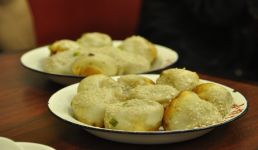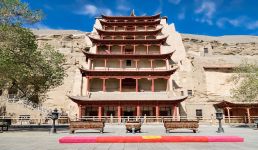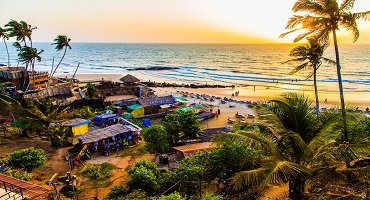Think of 9,600,000 square kilometres of land. Vast, beautiful, breathtaking. You wouldn’t think that 9,600,000 square kilometres could be completely filled. And yet, China defies that expectation. With a history that stretches over 3 millenniums, incredible ancient heritage, natural wonders, rich flavours and tastes, a variety of ethnic cultures, modern cities and more, China dominates every inch of the land that bears its name. That’s an essence that can’t be bottled, caged or confined. China – the fourth largest country – uncovers surprise after surprise for those who set foot on her soil. Will you be the next one? Will you take on the challenge of China Tourism and all its wonders? If yes, then this is for you!
|
China Tourism: A Quick Overview
|
|
Continent
|
Asia
|
|
Official Language
|
Mandarin
|
|
Dial Code
|
00-86-area code-number
|
|
Population
|
1.43 billion
|
|
Currency
|
Yuan
|
|
Time Zone
|
(GMT+8)
|
|
Area
|
9,600,000 sq. km
|
Highlights of China
Cities
The task of exploring China must not be underestimated. Afterall, this country is home to over 600 cities, varying in size, population, culture, traditions, cuisines, dialects and more. There are some cities, though, that tower over the rest. Beijing, the capital city, is an ancient city that has stood the test of time. This is the home of the Forbidden City, the ornate Summer Palace and the Temple of Heaven, which are nestled in the busy folds of a bustling city. Following the capital city is China’s largest city – Shanghai. Brimming with vitality and vigour, Shanghai offers a platter of delights like Zhujiajiao Water Town, Shanghai Tower and a ride on the Maglev – the world’s fastest train. If Giant Pandas enchant you (and everyone else on the planet) a visit to Chengdu is necessary. Head to the Dujiangyan Panda Base to meet these gentle giants. Elegance is redefined in Hangzhou, with its heavenly beauty and rich Buddhist and imperial culture. Visit the West Lake, Lingyin Temple, Wuzhen Water Town. Crackling with energy and pulsing with a frantic beat, Hong Kong is busy (and then some). Victoria Harbour, Lantau Island, Victoria Peak, the extensive tram systems, the massive shopping malls… make sure you tick these off your list. It doesn’t end there. The beauty of China cannot fully be expressed by these tiny slivers. Experience the beauty of rural China in Yangshou, Guilin. Peek into China’s ancient civilization with a visit to Xi’an’s legendary terracotta army.
Nature
The length and breadth of China is nature’s playboard, where everything from the whimsical to the wonderful can be found. Take, for instance, the Zhangjiaje National Forest Park, where sandstone pinnacles spear out of the green forest depths. Experience the serene wonder of the Li River – with its ribbon of ripples – as it flows past tall mountains. Feel the might of the grand Yangtze River, especially the Tiger Leaping Gorge (the narrowest part of one of the deepest canyons in the world). Turn your gaze to Jiuzhaigou, where every colour of the rainbow is splashed over the land. Turquoise pools gush amidst pink, orange, green and yellow shaded trees. White capped peaks stand grandly in the background. If you’re looking for the big and bold, then you must witness the Qiantang Tidal Bore, where the waves froth up to almost 30 ft in height and travel as fast as 40 km per hour. Affectionately and perhaps reverently called the Silver Dragon, this is a sight to savor.
Shopping
Planned a shopping list for your trip to China? Well, either shred it or find some more paper…China offers a landslide of handicrafts, products, apparel, souvenirs and more to buy. In Chengdu, Chunxi Road is the place to shop till you drop. Wander and select products from over 300 shops crammed on Shangxiajiu Pedestrian Street in Guangzhou. You’ll find trendy clothing and great footwear at this market, so dive in! Sometimes, the markets in China can surprise you. Take, for instance, Central Avenue in Harbin, Heilongjiang Province, where you’ll find all kinds of products from Russia. For your high-end brands and luxury items, a trip to The Bund in Shanghai is perfect. Hugo Boss, Patek Phillippe, Armani and more… you name it, it’s at The Bund. A veritable flood of silk will greet you at Silk Street in Beijing. You’ll also find delicate porcelain, the iconic palm and oriental paintings of China, Calligraphy art and gorgeous Chinese jade at this market.
Cuisine
The flavours of China have spread all over the world – but they’ve been tweaked, changed and morphed to suit our taste buds. If you want to experience authentic Chinese food, then you’re in for a treat. Chinese chefs have identified 8 major cuisines in the country. The fine seafood and rice dishes of the world-famous Guangdong/Cantonese Cuisine. The spicy, bold and brilliant flavours of Sichuan cuisine. The fresh, salty sweet and colourful dishes of the Jiangsu cuisine. The mellow melody of Zhejiang cuisine, with its emphasis on freshwater fish, bamboo shoots and crispy textures. The delicate balance of sweet and sour in the Fujian/Min Cuisine. The stir, steam and sauté of the hot and sour Hunan cuisine. The wild and hearty peasant food that comes for the Anhui cuisine. The braised sharpness of the salty and crispy Shandong cuisine. Each Chinese cuisine has its own charms, its own iconic dishes and its own signature flavours and ingredients. Your taste buds are going to be very busy in China.
Interesting Facts about China
- China is home to the Yangtze River – the fourth largest river in the world. It also has the sixth-longest river – the Yellow river
- In 2003, China became the third country to successfully send a person to space
- The Chinese New Year celebration is 15 days long
- Each year of the Chinese calendar is represented by a different animal
- The Forbidden City – a palace complex in Beijing – has over 9,000 rooms
- If you were to join all of China’s railway lines, it would loop the earth twice
- Hong Kong has more skyscrapers that any other city in the world
- The Bailong Elevator in Hunan carries visitors more than 300 meters up a cliffside
Location Of China
Located in East Asia, China shares its borders with 16 different countries. Kazakhstan, Russia, India, Mongolia, North Korea, Vietnam, Afghanistan, Nepal, Bhutan, Pakistan and Tajikistan are just some of the countries that nudge up against the borders of this vast country.
Best time to Visit China
Considering the size of China, it’s hard to pinpoint the exact best time to visit the country. There are diverse landscapes and climates to consider before you book your tickets. The general rule, though, is that Spring is the ideal time to visit any part of China. March to May and September to November are the ideal seasons to experience China in comfort. Southern China is extremely muggy during the summer, while Northern China is best-experienced mid-summer. Winter is rather harsh in China, so choose carefully and do your research before booking your tickets or travel package.
How to reach China
By Air: A wealth of options lay before you when you fly to China. The country is well connected to all corners of the globe and has a host of airports to choose from. Hong Kong airport is one of the largest and busiest, however Beijing, Shanghai, Hangzhou and Guangzhou all boast of vast and impressively connected airports. Major airlines in China include China Southern Airlines, Air China, Hainan Airlines and China Eastern Airlines.
By Rail: Since China and India share a border, it’s possible to travel by rail to China. However, your best bet is to take a train from Kazhakstan or the Russian Trans-Siberian Express to reach China. These are week-long journeys so brace yourself. North Korea and Vietnam also boast of trains that roll right into China. You may need to book your tickets 2 months in advance, depending on when you decide to travel.
By Road: Travelling to China via the open road? Then take the Karakoram Highway from Pakistan or drive via Nepal. Vietnam also has 2 border crossings and China can also be approached from Myanmar or Laos.
By Ship: Ships travel to China from all parts of South East Asia. Take a trip from Kobe, Japan to China or catch a regular ferry from Osaka, Japan to Shanghai. You can also avail of regular ferry services from Macau or Hong Kong.
Note: Due to the current political climate, crossings between India and China are not permitted. The most direct route for Indians is to catch a flight to China. However, if you are in another country then you can avail of road, ship or rail crossings to China.
History of China
China has a long and rich history. The country was the birthplace of one of the world’s first civilizations, based largely on the fertile basin of the Yellow River. For many years, China’s political system was designed on dynasties or hereditary monarchies, the first of which was the Xia dynasty in the 21st century BCE. As the years passed by, China was splintered, broken and divided into many parts. The Qin dynasty in the 3rd century BCE was responsible for reuniting core China and established itself as China’s first empire. This was followed by the great Han Dynasty, who oversaw pathbreaking inventions like papermaking and the construction of the compass. The invention of gunpowder defined the Tang Dynasty and the printing invention of the Northern Song Dynasty completed the 4 Great Inventions. 1912 saw the death of Dynastic rule, with the Xinhai Revolution and the republic replaced the Qing dynasty. During World War II, Japan invaded China which resulted in the Chinese Civil War. The repercussions of that war still resound today. China was divided into the People’s Republic of China and Taiwan (the existence and legitimacy of which is still not accepted by China).















































































